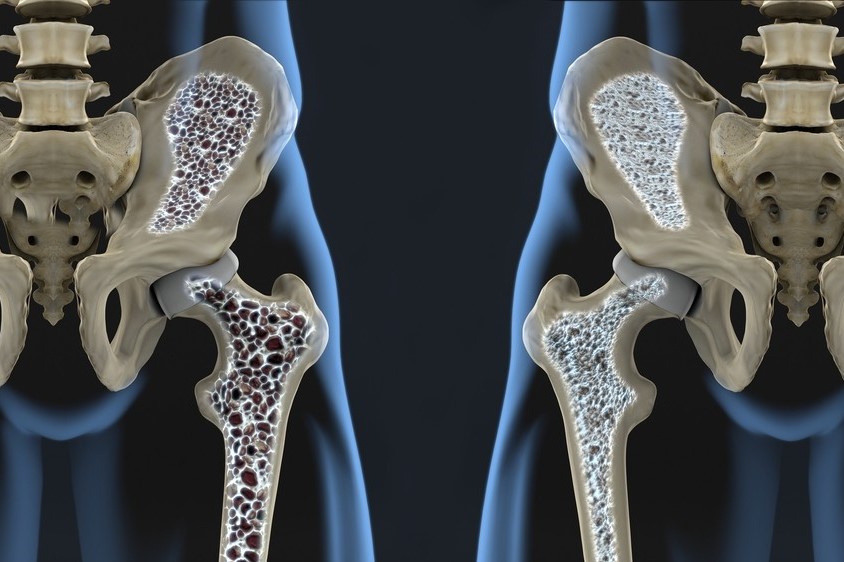
World Osteoporosis Day: healthy lifestyles, sun and diet are good for bones
In Italy, 23% of women over 40 and 14% of men over 60 suffer from osteoporosis; it affects an estimated 5,000,000 Italians, 80% of whom are post-menopausal women
Unfortunately, there are still those who think that osteoporosis is just a flaw of age or something that has to be dealt with sooner or later.
Few Italians undergo regular check-ups and do prevention: they usually go to a specialist when the situation of bone fragility is already serious and compromised.
20 October, World Osteoporosis Day, is also an opportunity to talk about it and dispel false myths.
Osteoporosis does not manifest itself with specific symptoms? TRUE
Osteoporosis is a silent disease until a fracture occurs.
The first fracture is often a wrist or rib fracture following a fall, which are often underestimated and considered “traumatic”.
Or the fracture of a vertebra which, in more than half of the cases, does not cause pain: the reduction in height or the appearance of spinal deformities (curved back or hump) can be warning signs of vertebral fractures.
Is it only a female pathology? FALSE
Of all the diseases that can affect the bones, osteoporosis is the most common, affecting both men and women.
However, it should be noted that women are four times more likely to suffer from osteoporosis after the menopause.
This is because, in the first years after the menopause, the reduction in oestrogen leads to a more rapid reduction in bone mass.
Is osteoporosis diagnosed by common laboratory tests? TRUE
The first diagnosis is based on the MOC, an X-ray technique that provides an assessment of bone mass, which in turn is related to the risk of fracture.
As bone mass decreases, the risk of fracture increases.
However, in the case of an MOC compatible with osteoporosis or fracture, the correct diagnosis requires an X-ray of the spine and specific blood and urine tests.
Does osteoporosis only occur in old age? FALSE
Osteoporosis is a disease that mainly occurs with advancing age, but there are also forms of osteoporosis that can affect young people.
These are frequently of a secondary nature, i.e. linked to the use of drugs with negative effects on the bones or chronic diseases that can damage the skeleton (corticosteroids, antiepileptics, heparin, oral anticoagulants, diuretics).
Can osteoporosis, in milder cases, be treated by supplementing with calcium and vitamin D? TRUE
In the majority of patients, if the MOC shows a modest reduction in bone mass in the absence of fractures or particular risk factors, a simple supplement of calcium (with the diet or supplements) and vitamin D is sufficient.
If, on the other hand, the patient has already had an osteoporosis fracture or has other risk factors (e.g. cortisone), it is often necessary to combine pharmacological therapy, obviously after excluding the causes of secondary osteoporosis that require targeted therapy.
Does the sun make the skeleton stronger? FALSE
Exposure to the sun enables the body to produce vitamin D, which is useful for fixing calcium in the bones, but it is also true that exposure to the sun alone is not sufficient in most cases to ensure adequate production of vitamin D.
In particular, those most at risk are the elderly, especially if they are institutionalised or do not leave their homes, people who are overweight and people with a darker complexion.
Can smoking aggravate or accelerate the course of the disease? TRUE
Studies show that smoking is associated with loss of bone mass, so much so that quitting smoking has been found to have almost the same effects as drugs that promote the formation of new bone tissue.
Whereas alcohol abuse not only impairs the activity of osteoblasts, the cells that build bone, but also inhibits the formation of vitamin D.
Osteoporosis sufferers should NOT exercise? FALSE
The number one enemy of bones is being sedentary.
In order to prevent osteoporosis from damaging your bones, it is a good idea to take some healthy exercise, always to be decided with your doctor on the basis of your age and your clinical situation and health condition.
Dancing can also help with skeletal health.
Osteoporosis and the risk of fracture cannot be cured but only ‘stopped’? FALSE
The drugs currently available for the treatment of osteoporosis are able to bring about important improvements in terms of both MOC and, above all, reduction of fracture risk.
Furthermore, in many cases of osteoporosis both secondary and secondary, diagnosis and treatment of the pathology (hyperthyroidism, hypercortisolism, celiac disease) that led to the development of osteoporosis contributes to an important reduction in fracture risk.
Read Also:
Wrist Fracture: How To Recognise And Treat It
Paediatric Osteomyelitis: New Indications For Treating The Bone Infection


